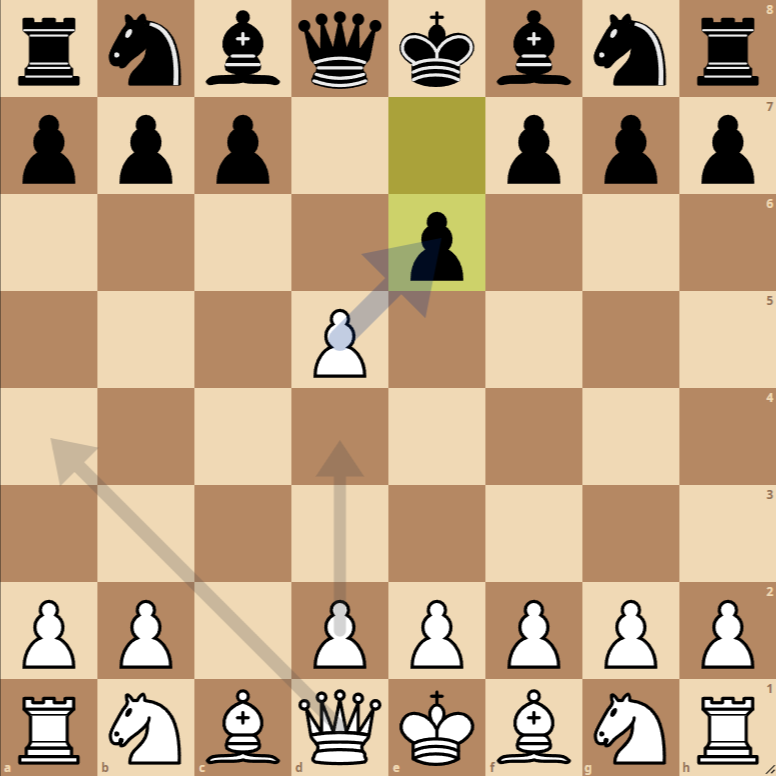How to Play the English Opening: Anglo-Scandinavian Defense, Löhn Gambit


The English Opening: Anglo-Scandinavian Defense, Löhn Gambit starts with the following moves in algebraic notation:
- 1. c4: This is the characteristic move of the English Opening. The aim is to control the center of the board, particularly square d5, from a flank.
- 1… d5: Black responds aggressively, directly challenging center control and proposing a symmetrical game.
- 2. cxd5: White captures the pawn on d5. This move initiates the Löhn Gambit, an attempt to imbalance the position early in the game.
- 2… e6: Black looks to recover the lost pawn on d5, preparing the ground for either queen or pawn recapture.
Variations of the English Opening: Anglo-Scandinavian Defense, Löhn Gambit
Variation 1: Queen Recapture
In this variation, Black recaptures the pawn on d5 with the queen after 3. …Qxd5. This leads to early queen development, which can be both an advantage and a risk.
Variation 2: Pawn Recapture
An alternative is to recapture with the pawn on e6, with 3. …exd5. This move maintains a solid pawn structure and allows Black to develop pieces without exposing the queen early.
Variation 3: Knight Development
Another possibility for Black is to focus on piece development instead of immediate recapture. Moves like 3. …Nf6 prepare the ground for a more positional game and long-term center control.
English Opening: Anglo-Scandinavian Defense, Löhn Gambit
The game has begun with an interesting variation in the English Opening, specifically the Anglo-Scandinavian Defense with the Löhn Gambit. The sequence of moves is 1. c4 d5 2. cxd5 e6. Let’s analyze the position and possible strategies and tactics for both sides.
Current Position
After 2…e6, White has accepted the gambit, and Black seeks to recover the sacrificed pawn. The pawn structure shows greater central control by Black. However, White has easier piece development and a slight advantage in space.
Strategies and Tactics for White
- Recover the Pawn: A natural idea for White is to maintain their material advantage by playing 3. dxe6. However, this could simplify the position, favoring Black.
- Development and Center Control: Instead of focusing on material, White may opt for quick development, for example, with 3. Nc3, exerting pressure in the center and preparing castling.
- Active Piece Play: White should seek activity for their pieces, especially their bishops and knights, aiming to exploit potential weaknesses in Black’s pawn structure.
Strategies and Tactics for Black
- Pawn Recovery: Black could continue with 3…exd5, regaining the pawn and maintaining a solid pawn structure.
- Development of Minor Pieces: It’s crucial for Black to quickly develop their minor pieces, with moves like …Nf6 and …Bc5, targeting the center and creating pressure.
- Castling and King Safety: Early castling can be a good strategy for Black, ensuring king safety and connecting the rooks.
Suggested Moves
For White:
- 3. Nc3: Developing a piece and maintaining options for center control.
- 3. d4: Strengthening the center and preparing the development of other pieces.
For Black:
- 3…exd5: Regaining the pawn and maintaining a good pawn structure.
- 3…Nf6: Developing a piece toward the center and preparing for castling.
Conclusion
This opening presents an interesting mix of strategy and tactics. While White can opt for solid and structured play, Black has the opportunity to counterattack and leverage their central pawn structure. Both sides should focus on rapid piece development, king safety, and center control. The game promises to be dynamic and rich in tactical possibilities.

